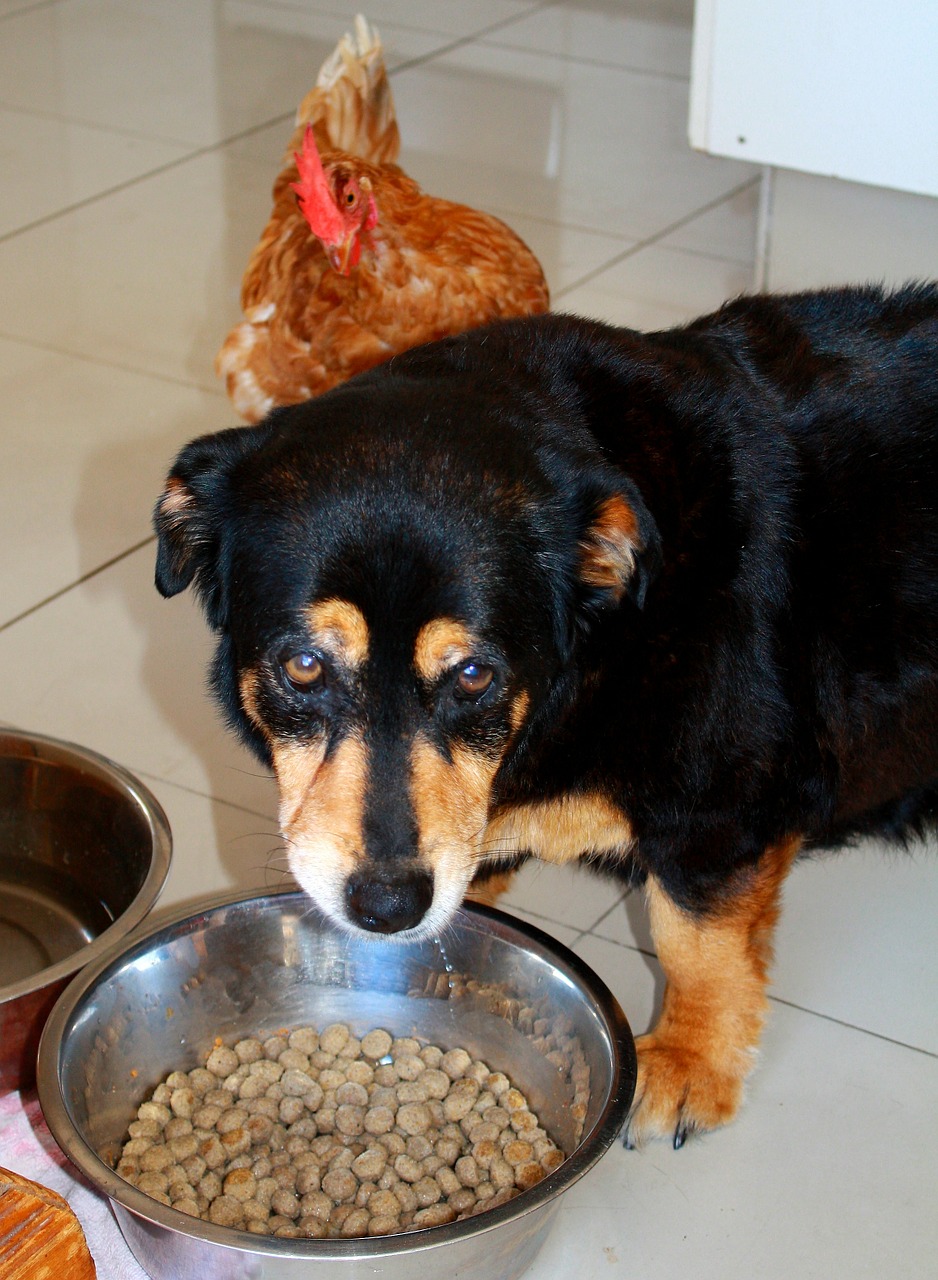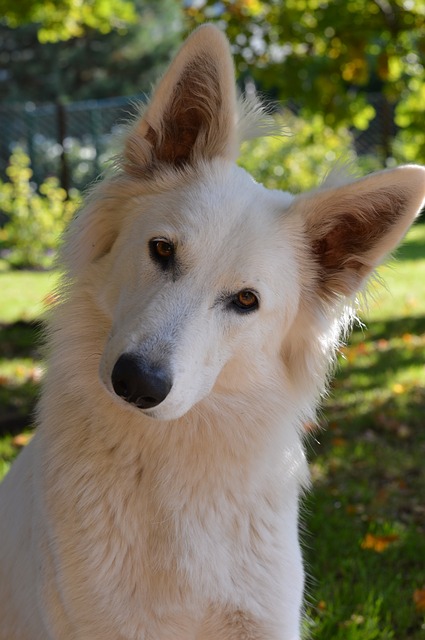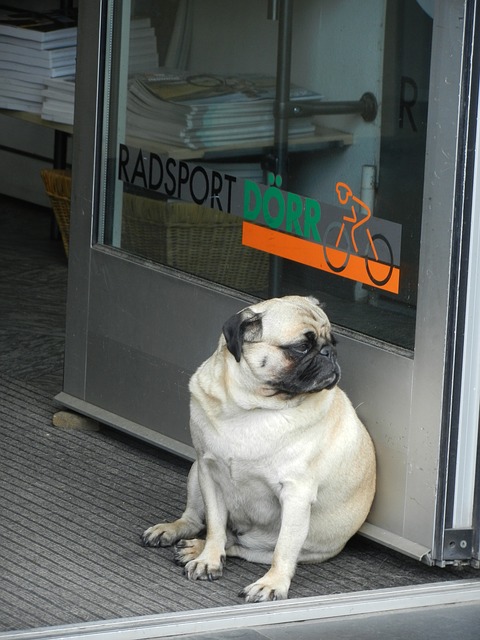Teaching your dog the importance of patience should never be overlooked. “Waiting” whether for food, to enter or exit an area, or stay anywhere else not only allows them to see you as their dog parent as dominant, but can keep them safe in the future. For example, you can even incorporate the “Wait or Stay” command when walking them without a leash and if you need them to stay when a car is crossing.
Step 1: Prepare the necessary tools for training
To properly train your dog the wait command with food consumption, and further “Wait Training” methods you will need the following tools:
Step 2: Training to Wait for Food In Bowl
Begin with a bowl of your dog’s favorite food. Lower the food bowl down toward your dogs nose. When your dog stays in position you may reward their positive behavior by giving them one piece of kibble.
You may then try lowering the dog bowl and reward with one piece of kibble for waiting for their food. If you dog then tries to go for the dog bowl refrain from allowing them, and move the dog bowl back upwards above the dogs head out of reach, and begin the process again.

You should repeat this consistently until you can allow the bowl to be on the floor, and your dog remains in the wait position for you to say release, boop their nose, or click and command.
Step 3: Wait Command: On a Leash

One method for teaching your dog wait is to use the command wait and move yourself in front of your dog for them to be right initially and for them to be unable to make a mistake. This will normalize the wait behavior. You can then begin moving backwards and shake the leash after the wait to cause distractions and then reward after a successful wait period.
You will want to also release your dog whether that is by saying commands like “OK, or Release” as well as using your click remote.
Step 4: Marking Mistakes, and Rewarding Correct Movement

If your dog makes an incorrect movement when training this technique, instead of guiding them with kibble you will want to make clear the movement is incorrect. You can say no, and then bring them with your leas back to their initial position and show them how to be correct.
After they are back in their wait position for a long enough time, your may reward the stationary “wait” behavior.
Step 5: Doorway Wait Training
Another excellent place to teach your dog the wait technique can be training for entering and waiting outside doors. Many dogs have a habit of rushing towards doors especially with new visitors or knocks. Teaching your dog wait can be very helpful for allowing visitors to have a chance to enter and then releasing your dog with a command after waiting, etc.

With this technique, you can start slowly by stating wait with your dog on your leash. You may then move into the door way with one foot, than come back and reward. You may repeat and exit with both feet on the other side of the door. Then you may reward for this behavior. Additionally, you may release your dog and let them enter the doorway and provide them a reward for this as well.
-Video Courtesy of McCann Dog Training–
BONUS LESSON: ADVANCED “STAY” TECHNIQUE
For advanced stay techniques many trainers struggle with their dogs remaining in the Sit and Stay position. That is because they need to additionally practice the sit, and wait techniques in outdoor locations as well as using additional release methods, like a boop on a nose, or a click remote.
In the below video, Dog Training Professional Robert Cabral explains the best way to train with distractions, and teach your dog to stay indefinitely no matter if you are hitting your legs, or waving your arms.
– Video Courtesy of Robert Cabral –
Here at Dog Parent Academy we are here to help you and your dog enjoy a stronger connection, and a lifelong connection. Our Dog Parent Academy Community is here for your questions, and is free to join. You can also find us on our Facebook Page and talk with other Dog Parents. Happy Training!












best university egypt
[…]although web sites we backlink to beneath are considerably not related to ours, we really feel they may be truly really worth a go through, so possess a look[…]
Faculty of Economics and Political Science
[…]Sites of interest we have a link to[…]
Water Bath
[…]Wonderful story, reckoned we could combine a few unrelated data, nevertheless definitely really worth taking a appear, whoa did one study about Mid East has got much more problerms at the same time […]
Dental Hospital
[…]Sites of interest we have a link to[…]
Teeth whitening
[…]always a major fan of linking to bloggers that I like but dont get a great deal of link like from[…]
withdrawal from the semester
[…]that is the finish of this post. Here youll discover some web sites that we assume youll value, just click the links over[…]
Computer Science Programs in Egypt
[…]one of our visitors not long ago suggested the following website[…]
sustainable development
[…]Sites of interest we’ve a link to[…]
Mechatronics Engineering
[…]below you will obtain the link to some sites that we think you ought to visit[…]
smart university
[…]please visit the sites we follow, like this one, because it represents our picks from the web[…]
Future University Egypt MBA
[…]Here are a few of the websites we suggest for our visitors[…]
Maillot de football
[…]just beneath, are numerous entirely not related web pages to ours, having said that, they are surely really worth going over[…]
Maillot de football
[…]that is the finish of this report. Here you will locate some sites that we assume you will enjoy, just click the links over[…]
Maillot de football
[…]please stop by the web sites we follow, such as this one, as it represents our picks in the web[…]
Maillot de football
[…]check beneath, are some completely unrelated sites to ours, even so, they may be most trustworthy sources that we use[…]
Maillot de football
[…]that is the finish of this report. Here youll discover some web-sites that we think youll appreciate, just click the links over[…]
Maillot de football
[…]we prefer to honor many other web web sites on the web, even if they arent linked to us, by linking to them. Beneath are some webpages really worth checking out[…]
Maillot de football
[…]usually posts some quite intriguing stuff like this. If you are new to this site[…]
SEOSolutionVIP Fiverr
[…]Here is a great Weblog You might Discover Intriguing that we Encourage You[…]
parcours du combatant
[…]very few websites that occur to be detailed beneath, from our point of view are undoubtedly well worth checking out[…]
cage crossfit
[…]although internet sites we backlink to below are considerably not connected to ours, we really feel they’re truly really worth a go through, so possess a look[…]
musculation statique
[…]usually posts some pretty exciting stuff like this. If you are new to this site[…]
Fiverr Earn
[…]one of our visitors not long ago suggested the following website[…]
Fiverr Earn
[…]The information and facts talked about in the post are several of the best obtainable […]
flatbed broker
[…]one of our guests recently proposed the following website[…]
3pl Broker
[…]the time to study or visit the content material or sites we have linked to beneath the[…]
fiverrearn.com
[…]just beneath, are a lot of totally not connected websites to ours, on the other hand, they are surely worth going over[…]
french bulldog ears down
[…]check below, are some completely unrelated web-sites to ours, nonetheless, they’re most trustworthy sources that we use[…]
american bully exotic
[…]we like to honor quite a few other world-wide-web web pages on the net, even when they arent linked to us, by linking to them. Underneath are some webpages really worth checking out[…]
Short-term Piano Storage
[…]check below, are some entirely unrelated web sites to ours, nonetheless, they may be most trustworthy sources that we use[…]
Top university in Egypt
[…]the time to study or stop by the content material or web pages we’ve linked to below the[…]
french bulldogs
[…]although web sites we backlink to beneath are considerably not related to ours, we feel they are actually really worth a go via, so have a look[…]
Streamer
[…]Wonderful story, reckoned we could combine a handful of unrelated data, nevertheless definitely really worth taking a search, whoa did one particular understand about Mid East has got a lot more problerms as well […]
partners
[…]check below, are some entirely unrelated internet sites to ours, nonetheless, they may be most trustworthy sources that we use[…]
fue
[…]below youll uncover the link to some websites that we feel it is best to visit[…]
MBA programs in Egypt
[…]Every after inside a though we select blogs that we study. Listed below are the latest web pages that we pick […]
Globalization
[…]one of our visitors just lately proposed the following website[…]
texas french bulldogs
[…]that could be the end of this write-up. Right here you will locate some internet sites that we feel you will appreciate, just click the links over[…]
Scientific Research
[…]Wonderful story, reckoned we could combine a couple of unrelated data, nevertheless definitely really worth taking a look, whoa did one particular discover about Mid East has got much more problerms as well […]
Generator repair Yorkshire
[…]just beneath, are many totally not associated web sites to ours, nevertheless, they are certainly really worth going over[…]
live sex cams
[…]check beneath, are some absolutely unrelated internet websites to ours, nonetheless, they may be most trustworthy sources that we use[…]
live sex cams
[…]that could be the finish of this post. Here you will obtain some web pages that we think youll appreciate, just click the links over[…]
rare breed-trigger
[…]although internet sites we backlink to below are considerably not associated to ours, we feel they’re really worth a go via, so have a look[…]
늑대닷컴
[…]usually posts some really fascinating stuff like this. If you are new to this site[…]
Wild symbol
[…]one of our guests a short while ago encouraged the following website[…]